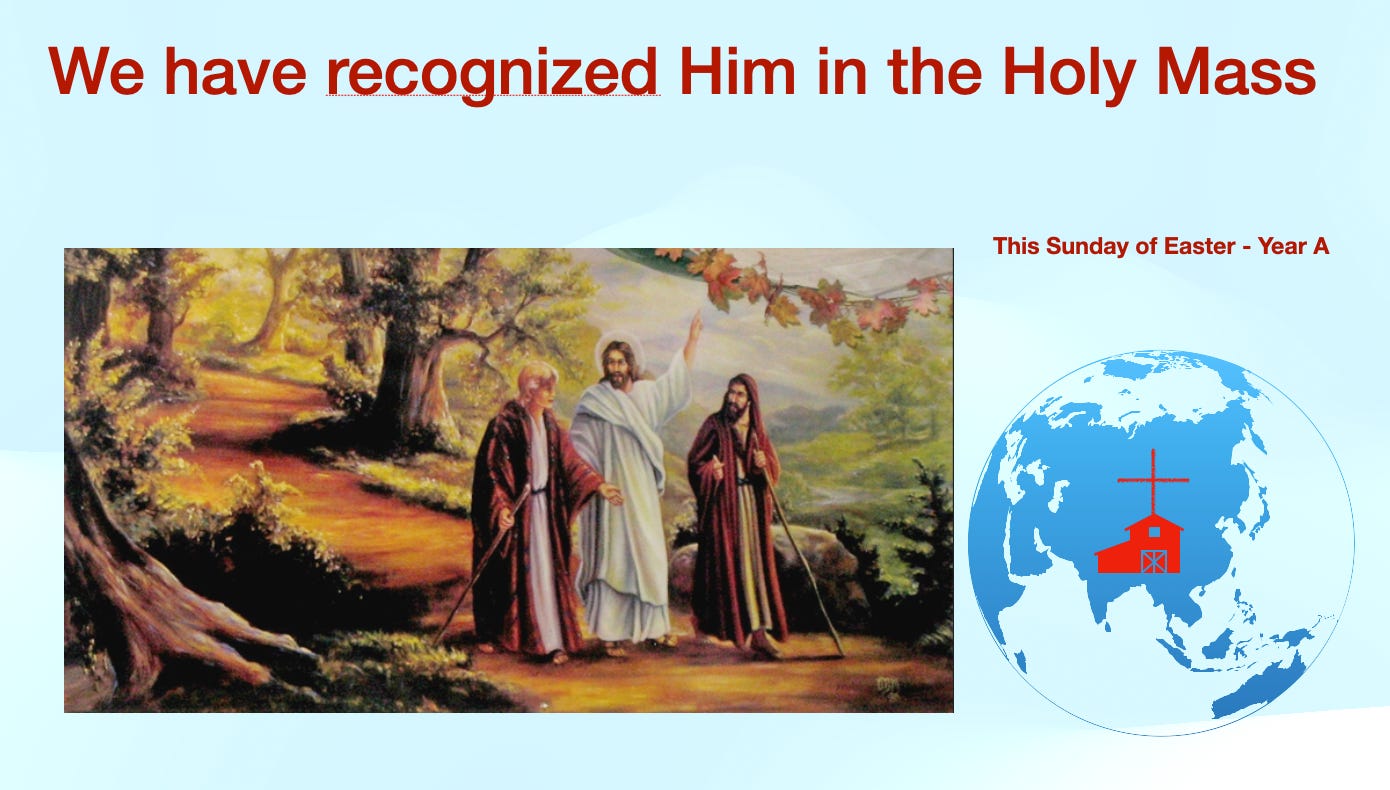Acts 2:14,22-33; 1 Peter 1:17-21; Luke 24:13-35
The Holy Mass consists of two main parts: the liturgy of the Word and the liturgy of the Eucharist. This is also the structure of today's Gospel. The liturgy of the Word begins when Christ joins the two disciples and asks about the topic of their conversation. The disciples share news about Jesus that is confined to his preaching, miraculous activities, and His tragic death on the cross (Luke 24:19-20). But their news lacks two important elements: (1) the meaning of Christ's death and (2) the proclamation of Christ's resurrection. And without these two elements, there is no Gospel.
St. Augustine said that the New Testament is hidden in the Old Testament. To understand the meaning of Christ's death one must dig into the Old Testament. By using Moses, the Prophets, and later also the Psalms (Luke 24:27,44), Jesus explains that his suffering was a necessary condition to "enter into his glory" (Luke 24:26). The same method is used by Peter. In his letter, he compares Jesus to a Passover lamb from the book of Exodus (1 Pet. 1:19; Ex 12:5), and in his sermon, he shows that Jesus' death and resurrection were already predicted in Psalm 16 (Acts 2:29; Ps. 16:10).
Peter's sermon deeply moved his listeners (Acts 2:37) and the hearts of the disciples were burning when they heard Christ's explanations of the Scriptures (Luke 24:32). But that was not sufficient to recognize the risen Christ. What would happen if those two disciples and Christ parted their ways at that very moment? What would happen if, after Peter's sermon, the listeners instead of saying, "what shall we do?" (Acts 2:37), would say, "we will hear you about this some another time" (Acts 17:32)? What happens when a church confines its celebration to the liturgy of the Word?
After the "liturgy of the Word", the hearts of the disciples are burning but their eyes are still being kept "from recognizing him" (Luke 24:16). Why is it so difficult to recognize the risen Christ in our midst (John 20:15; 21:4)? Is it a problem of human perception or the fact that Christ appears "in a different form" (Mark 16:12)? On the one hand, the truth about the resurrection exceeds our wildest imagination, on the other hand, the body of the risen Christ "possesses the new properties of a glorious body" (CCC, 645). So, how can we recognize his presence? "Stay with us, for it is toward evening" (Luke 24:29). This invitation is the answer to our problem.
"So he went in to stay with them" (Luke 24:29). The liturgy of the Eucharist begins. The one who explained the Scriptures now takes bread in his hands, blesses it, breaks it, and gives to them (Luke 24:30). The same verbs were used during the Last Supper, except that then Jesus added: "This is my body" (Luke 22:19). In Emmaus, those gestures opened the eyes of the disciples: "and they recognized him [...] in the breaking of the bread" (Luke 24:31,35). The first Eucharist celebrated after Jesus' resurrection reveals to us the mystery of Christ's real presence among us.
On Easter morning, Peter ran to the tomb and found it empty (Luke 24:12) but soon after he was the first among the apostles to meet the risen Jesus (Lk 24:34; 1 Cor 15:4). Thus "an idle tale" of the women (Luke 24:11) turned out to be a reality. "The Lord has risen indeed, and has appeared to Simon!" (Lk 24:34), and we share our personal stories of recognizing his presence in the Holy Mass (Luke 25:35).




